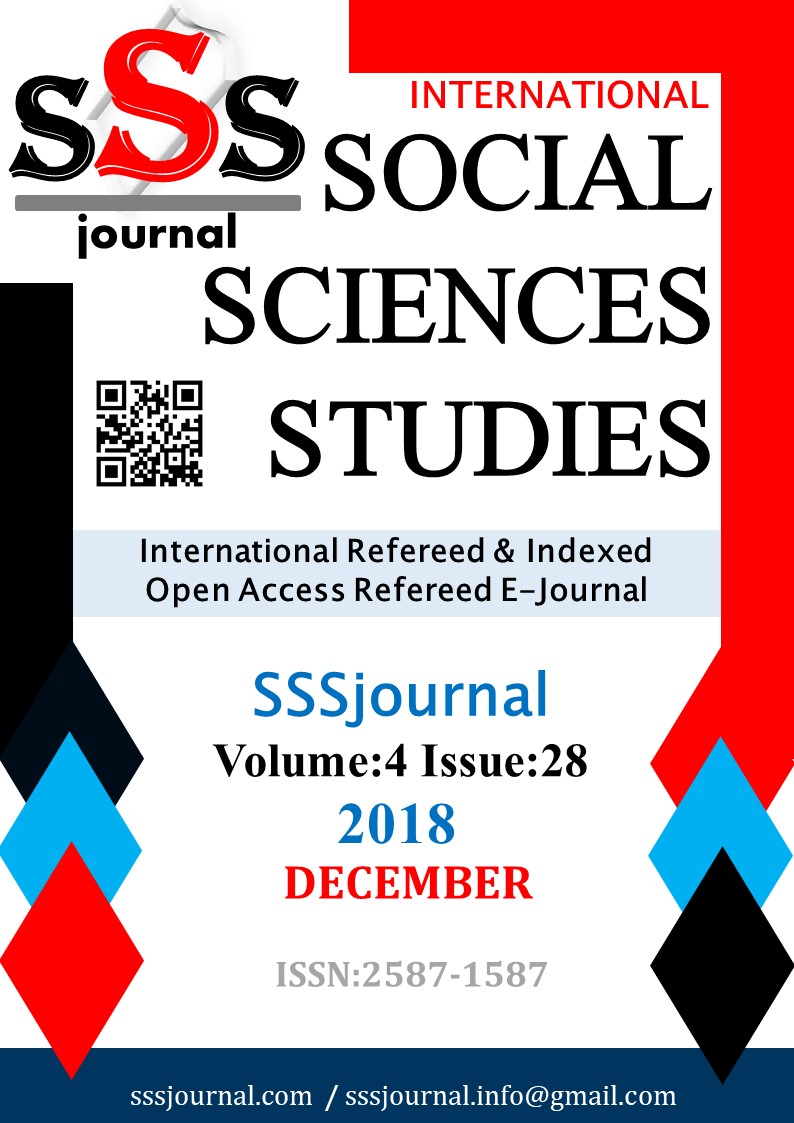Author :
Abstract
Suat Derviş, Cumhuriyet Dönemi’nin önemli kadın yazarlarındadır. Derviş, yazarlığının yanı sıra, başarılı bir gazetecilik geçmişine de sahiptir. Yaşadığı dönemde çok az eseri basılmıştır. Ölümünden sonra ise yine uzunca bir süre hak ettiği ilgiyi görememiştir. Bugün Derviş’in pek çok hikâye ve romanı gazete sayfalarında kalmış, okuyucuyla buluşma fırsatı yakalayamamıştır. Suat Derviş, hikâyelerinde 1930 ve 1940’lı yılların İstanbul’unun bir panoramasını verir. Onun hikâyelerine İstanbul’un kenar mahallelerinin yoksulluğu yansır. Derviş’in hikâyelerinde toplumcu gerçekçi bir eğilim de dikkat çeker. Bu toplumcu çizgi onun edebiyat anlayışını belirleyen yönlerden biridir. Derviş’in yalnız hikâyeciliğinde değil, romancılığında da bu toplumcu yönü dikkat çeker. Suat Derviş, hikâyelerinde genellikle yoksulluk, işçi hakları gibi sosyal meseleleri, yozlaşan değerleri ve kadın erkek ilişkilerini ele alır. Yazar, hikâyelerinde sade ve anlaşılır bir dil kullanır. Hikâyelerinin başkahramanları çoğunlukla kadınlardır. Derviş, bir kadın olarak hikâye kurgularında kadını merkeze almayı ve işlediği konuyu daha çok kadın kahramanın bakışıyla vermeyi tercih eder. Bu çalışmada Suat Derviş’in 1936- 1937 yılları arasında çeşitli gazetelerde tefrika edilen hikâyeleri üzerinden onun hikâyeciliği ele alınacaktır.
Keywords
Abstract
Suat Derviş is one of the important women writers of the Republic Period. In addition to her writing, Derviş has a successful background in journalism. In the period that she lived her very little work was printed. After her death, she still could not see the attention that she deserved for a long time. Today, many stories and novels of Derviş remained on the newspaper pages and did not have the opportunity to meet the readers. In stories, Suat Derviş gives a panorama of Istanbul of the 1930s and 1940s. The poverty of the suburbs of İstanbul reflected to her stories. A socialist realistic tendency also draws attention in Derviş's stories. This socialist line is one of the aspects that determines her understanding of literature. This socialist aspect shows itself not only in Derviş's storytelling but also in her novelism. In her stories, Suat Derviş usually deals with social issues such as poverty, labor rights, degenerating values and relations of women and men. The author uses simple and clear language in her stories. The protagonists of their stories are mostly women. As a woman, Derviş chooses the woman to place to the center of her story and to give her subject more with the perspective of the female hero. In this study, Suat Derviş's storytelling through her stories, which are serialized in various newspapers between 1936-1937, will be discussed.
Keywords
- Acun, M. Niyazi (1935), “Yedi Yaşında Romancı”, Uyanış Servet-i Fünûn, 11 Nisan, C:77, nr:2016-331
- Acun, M. Niyazi (1935), “Yedi Yaşında Romancı”, Uyanış Servet-i Fünûn, 11 Nisan, C:77, nr:2016-331 Derviş, Suat (1936), Amma Erkek İnanmadı, Son Posta, 10 Haziran.
- Dervişoğlu, Bülent İsmail(2017), “Mehmet Emin Derviş Paşa, Dervişoğlu Ailesini Kuran Adam”, Anılar, Paramparça, (Yay. Haz. Serdar Soydan), İthaki Yayınları, İstanbul, 2017, s.261-332.
- İleri, Rasih Nuri (1986), Hayatımı Anlatıyorum: Çocukluğum, Meslek Hayatım, Çektiklerim, Tarih ve Toplum, S:29, Mayıs.
- Körpe, Oya (2001), Suat Derviş’in Hayatı, Edebi Kişiliği ve Eserleri Üzerine bir İnceleme, Dokuz EylülÜniversitesi Eğitim Bilimleri Enstitüsü, Ortaöğretim Sosyal Alanlar Eğitimi Anabilim Dalı Türk Dili ve Edebiyat Öğretmenliği Yayımlanmamış Yüksek Lisans Tezi, İzmir.
- Necatigil, Behçet (1976), Dünya Kadın Yılında Suat Derviş Üzerine Notlar, Nesin Vakfı Edebiyat Yıllığı, Yaylacık Basımevi, İstanbul.
- Oktay, Ahmet (2008), Toplumcu Gerçekçiliğin Kaynakları, İstanbul: İthaki Yayınları.Oral, Zeynep (1969), “İlk Romanını 7 Yaşında Yazdı”, Milliyet Gazetesi, 20 Mart.
- Saygılıgil, Feryal (2014), “Sokakta Bir Gazeteci: Suat Derviş,” Fe Dergi: Feminist Eleştiri, Cilt:6, S:1. Sertel, Sabiha (1969), Roman Gibi, Ant Yayınları, İstanbul.





